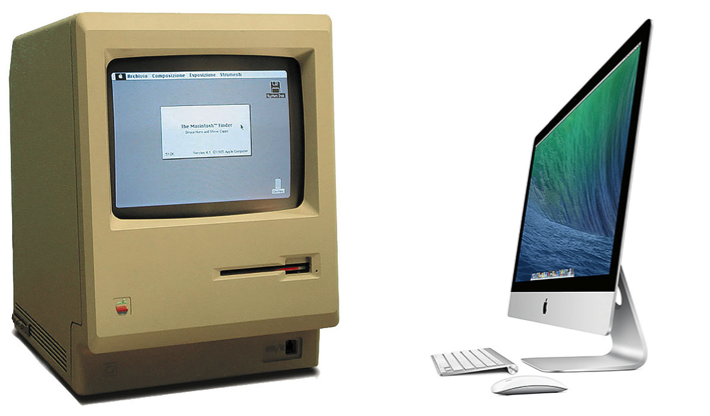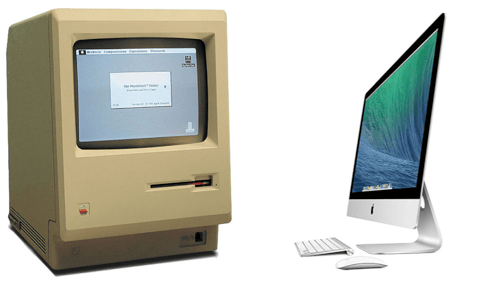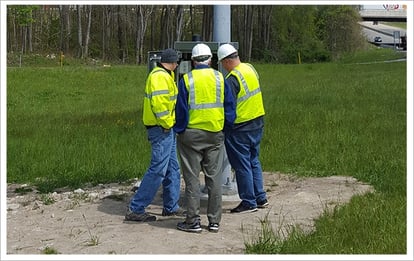
Removing Dynamic Message Sign Ventilation Provides DOT Cost Savings

If you look at the newest ultra-thin laptops on the market today, you will probably notice how much thinner and lighter they are compared to the laptops of even 5 to 10 years ago. Gone are the ventilation channels, filters and fans and their associated bulk, weight and cost. Yet Moore’s law implies that the number of transistors is doubling every two years. You would think that the heat management problem would be getting worse. What gives?
Fortunately, the semiconductor industry has managed to reduce the power dissipation faster than the growth of the device complexity. This has allowed equipment designers to eliminate much of the ventilation components of years past resulting in products that are thinner, lighter and more reliable.
Just as the computer designers have reduced the heat created in modern laptops, SESA has been pioneering the increased efficiency in display technologies which allows for the elimination of sign ventilation provisions.
However, in our Dynamic Message Signs (DMS) world, it seems that this technological evolution is not yet taken into consideration. Numerous specifications throughout the country still call for DMS ventilation, temperature monitoring, intake filters, etc. Many useless devices that add costs, use energy and increase the maintenance of our DMS.
Let's Do a Cost Estimate for a Large DMS 28 x 125 18" Amber or 54 x 250 Pixels 33mm Full Color:
- Ventilation cost for a standard DMS (28x125 pixels or 54x250 pixels full color) = $3,000 to $4,000 (average $3,500)
- Ventilation power usage = (20) 4.5 Inch AC Fans Intake and Exhaust x 18Watts = 360 Watts per Hour x (18hours per day) = 6,480 Watts per day x (365 days per year) = 2,365 kW per year
- Maintenance constraints = 1 visit per year (or every 6 months depending on DMS manufacturer recommendations) to change intake filters, verify fans, etc. = $900 to $3,000 per visit (depending on DMS access and lane closures needed)
The Yearly Cost of Ventilation Estimate:
- Energy cost = 2,365 kW per year x (National Average .15 cents per kW) = $354.78 per year
- Extra maintenance cost = $900 to $5000 per year (let us assume a low average estimate of $2,000)
If an organization has 15 DMS in operation for 10 years, the total cost of ventilation is:
- 15 DMS x $3,500 ventilation cost at purchase for one DMS = $52,500 total ventilation cost at purchase
- 15 DMS x 10 years x $2,000 avg. yearly maintenance cost = $300,000 total lifetime maintenance cost (one visit per year, dependant on cost of lase closures, labor, etc.)
- 15 DMS x 10 years x $355 annual energy cost = $53,250 total lifetime energy cost (at .15 cents per kW)
Total Lifetime Ventilation Cost for 15 DMS over 10 years: $405,750
This is a significant cost that can be easily eliminated. Can you imagine what else could be done with this taxpayer money?
What Does NEMA TS4 Say About Ventilation?
NEMA TS4, the standard used to specify Dynamic Message Signs, does not require ventilation. It only requires ventilation and fresh air intake for Walk-In access signs for the comfort and safety of maintenance personnel, not to cool the electronic parts. NEMA TS4 also recommends third party tests and the use of components with a temperature range from -34 to +74 Fahrenheit. As a matter of fact, most quality suppliers use LED and electronic components rated from -34 to +74 degrees F that can perform even in the harshest conditions.
 How Does SESA Technology Handle Ventilation?
How Does SESA Technology Handle Ventilation?
As pioneers in energy efficiency, SESA eliminated Dynamic Message Sign ventilation, even in our first generation of fiber optic DMS in the 1990's. Since 2009, SESA has been retrofitting old DMS and installing the newest LED technology in non-ventilated housings. For example, our non-ventilated LED DMS works extremely well under the very hot conditions found in locations like Texas and Arizona.
Conclusion
Ventilation systems are expensive at the time of purchase, requiring more maintenance and increased energy needs and costs. NEMA TS4 standard does not require ventilation and the new generation of electronic components work very well within non-ventilated housings. By following the trends of the computer industry, you can easily save money and energy by eliminating ventilation from your DMS while preserving quality and long term reliability usage of your devices.



